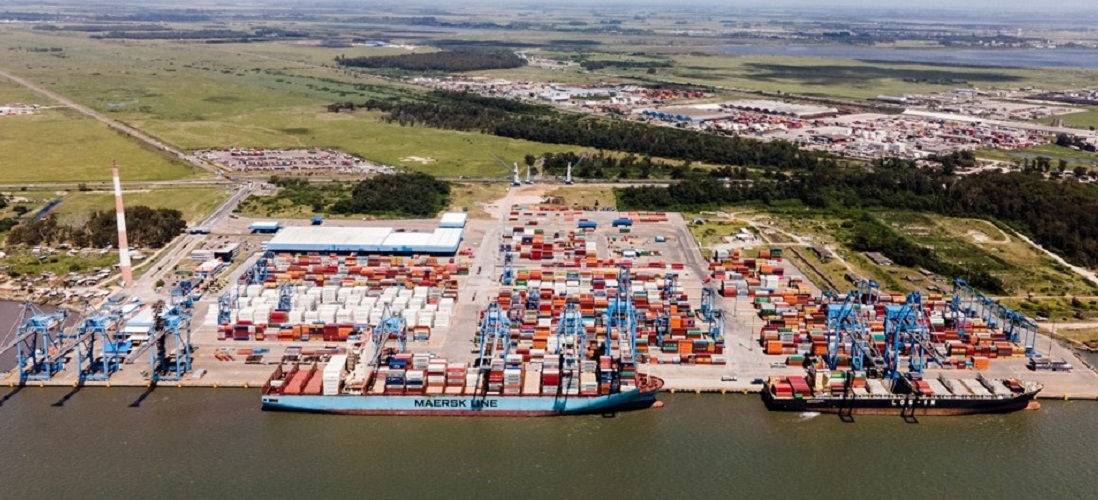
Port of Rio Grande invests in dredging to recover draft lost due to flooding
Aug, 26, 2024 Posted by Gabriel MalheirosWeek 202435
Although operations at the Port of Rio Grande—Rio Grande do Sul’s main export hub for farming products—didn’t halt during the floods that hit the state in April and May, the port still felt the impact of the climatic tragedy. A massive amount of sediment reduced the port’s draft, limiting its operational capacity. Now, Portos RS, the public company that manages the state’s waterways, is investing in dredging to allow larger vessels to safely return.
In June, the draft reached a minimum depth of 11.9 meters, down from 14.2 meters before the rains. “All the sediment carried by the rivers during the floods ended up here, where Lagoa dos Patos meets the sea. During the worst period, some ships couldn’t enter the port due to this sediment buildup. They had to unload at other ports before coming here to avoid the risk of grounding,” said Cristiano Klinger, president of Portos RS.
Portos RS has invested around R$25 million of its own funds in emergency dredging to increase the draft after the floods, removing 593,000 cubic meters of sediment over a three-kilometer stretch. The current depth stands at 12.8 meters. However, according to Klinger, additional investments of up to R$52 million will be necessary to deepen the channel to between 14.5 and 15 meters.
“The initial work was sponsored by Portos RS owing to the importance of preserving navigable conditions. However, the next phase’s required investment is much above our financial capacity. That’s why we’re negotiating these funds with the federal government,” he said.
Operations
In the first half of 2024, the Port of Rio Grande handled 18,531,991 tonnes of cargo. Despite the challenges posed by the rains and the reduced draft, this was only 3% less than the 19,097,639 tonnes recorded during the same period last year. Soybeans led the throughput, with a 25.01% increase year over year.
The chart below uses DataLiner data to show the combined total of container exports and imports registered at the Port of Rio Grande between January 2022 and June 2024. Readers may request a demo using the link below.
Rio Grande Port Exports and Imports | Jan 2022 to June 2024 | TEU
Source: DataLiner (click here to request a demo)
Among the ports in Rio Grande do Sul, Porto Alegre’s was the hardest hit by the floods, with operations halted for the entire month of May. Yet, the overall throughput for the first half of the year saw only a 2% decline compared to the previous year.
From January to June, Porto Alegre handled 368,245 tonnes. In the same period in 2023, it saw 375,697 tonnes. At the public dock in the state capital, fertilizer cargoes totaled 139,021 tonnes, followed by wheat at 132,323 tonnes; barley at 57,742 tonnes; beef tallow at 25,877 tonnes; salt at 11,605 tonnes; and general cargo at 1,677 tonnes.
The Port of Pelotas had to suspend activities for 15 days, from May 2 to 17. Despite this, it saw the largest drop in throughput among the ports managed by Portos RS, with an 18% decrease, handling 523,570 tonnes in the first half of 2024, compared to 638,976 tonnes in the same period in 2023. Wood logs for pulp production dominated operations, with 458,266 tonnes.
Modernization
The Port of Rio Grande serves as the primary gateway for agricultural exports from Rio Grande do Sul as well as imports of farming inputs into the state. With a throughput capacity of 50 million tonnes per year, the port currently handles up to 45 million tonnes. However, new investments are underway to expand and streamline activities at the port.
Since 2022, R$400 million has been allocated for improvements, which will be implemented by 2028. These upgrades aim to make the port more economical and competitive from a logistical standpoint, increasing automation, scales, and other essential infrastructure. Once the work is completed, it’s estimated that the wait time for trucks loaded with grains at the public dock entrance will be reduced by 15%.
One example of investment unlocked in the port is the installation of an automatic system to monitor vehicles, allowing for more precise traffic control. A cargo scheduling and digital invoice system are also being implemented. According to Klinger, “Truck drivers won’t need to get out of their trucks anymore; they will be able to move through the port smoothly and automatically. ”
Additionally, last year, Portos RS contracted a system developed by the Israeli startup Docktech to monitor the channels, and a Vessel Traffic Service (VTS) is being implemented to track vessel movements.
“These new technologies assist us in decision-making, planning, and the mission to attract new cargo and increase throughput,” highlighted the president of Portos RS.
Source: Globo Rural
Click here to be redirected to the original text: https://globorural.globo.com/especiais/caminhos-da-safra/noticia/2024/08/porto-de-rio-grande-investe-em-dragagem-para-recuperar-calado-perdido-com-enchentes.ghtml
-
Ports and Terminals
Dec, 18, 2023
0
Port of Itaqui celebrates 1000th ship mark in a single year
-
Coffee
Mar, 13, 2019
0
Brazil’s coffee exports to reach a record 40m bags – Cecafé
-
Economy
Aug, 23, 2021
0
Trade surplus totals $1.389 bi for the week to August 22
-
Shipping
Oct, 13, 2020
0
Brazil and Uruguay to sign agreement to develop binational waterway

